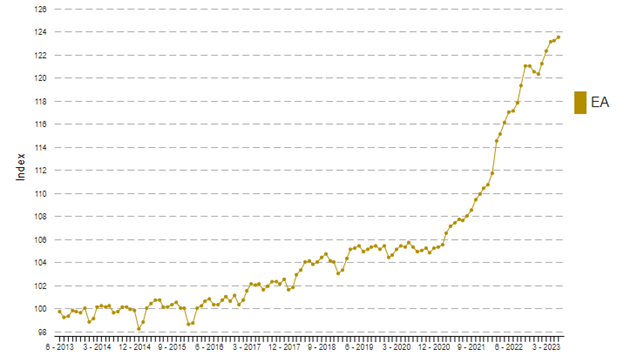 Infusion therapy, also known as intravenous therapy, plays a crucial role in administering fluids and medications directly into the bloodstream. In the United States, this market has been rapidly growing, driven by the aging population and the increasing prevalence of chronic diseases. Established companies like Baxter, Fresenius, B. Braun, ICU Medical and Terumo dominate the market, while smaller players and startups are emerging as strong competitors, leveraging innovative technologies and delivery systems.
Infusion therapy, also known as intravenous therapy, plays a crucial role in administering fluids and medications directly into the bloodstream. In the United States, this market has been rapidly growing, driven by the aging population and the increasing prevalence of chronic diseases. Established companies like Baxter, Fresenius, B. Braun, ICU Medical and Terumo dominate the market, while smaller players and startups are emerging as strong competitors, leveraging innovative technologies and delivery systems.
The European infusion therapy market has been witnessing remarkable growth in recent years, primarily driven by several factors.
Infusion Therapy Market Drivers in Europe
Firstly, the escalating prevalence of chronic diseases, including diabetes, cancer, and autoimmune disorders, has resulted in a higher demand for infusion therapy as an effective treatment option. The second factor is the aging population in Europe, which has contributed to the increased need for infusion therapy, as elderly individuals often require ongoing medical support.
Furthermore, advancements in medical technology have played a crucial role in expanding the market. Innovations such as smart pumps, wearable infusion devices and improved drug delivery systems have enhanced the safety, efficiency and convenience of infusion therapy, attracting both patients and healthcare providers.
The combination of these factors has created a robust market landscape for infusion therapy in Europe, with significant growth potential anticipated in the coming years. This growth presents opportunities for manufacturers and suppliers to cater to the escalating demand and develop innovative solutions to meet the evolving needs of patients and healthcare professionals.
The European infusion therapy market benefits from relatively looser regulations for device approval compared to the United States. European countries have streamlined approval processes, allowing for faster market entry of infusion therapy devices. This regulatory environment fosters innovation and encourages smaller players and startups to bring their products to market more quickly, contributing to the growth of the infusion pump market in Europe. The combination of favorable market conditions and a more efficient regulatory landscape positions the European infusion therapy market for further expansion and development.
Key Market Challenges to Watch
Despite the promising growth in the European infusion therapy market, challenges related to geopolitical factors and inflation need to be considered. The ongoing conflict between Russia and Ukraine has caused uncertainty in the European markets and resulted in increased energy prices. These factors, along with heightened inflation, have led to increased costs for infusion therapy devices. Medical device companies must navigate this challenging landscape to ensure affordable access to care.
The geopolitical tensions between Russia and Ukraine have resulted in a protracted conflict that has had significant adverse effects on the European market, including the infusion therapy sector. The escalation of energy prices, caused by disruptions in natural gas supply, has inflicted severe damage to European manufacturers. This has led to soaring production expenses and diminished profit margins within the infusion therapy market. Manufacturers are faced with significant hurdles in maintaining profitability amidst this challenging environment. Finding strategies to mitigate the impact of increased energy costs and ensuring the stability of the supply chain becomes crucial for navigating the ongoing Russia-Ukraine conflict and sustaining growth in the European infusion therapy market.

Another challenge stems from the rise in inflation across Europe, which can be attributed to the monetary policies implemented by European authorities to support the economy and prevent it from collapsing or entering a recession amidst the COVID-19 pandemic. These monetary policies, such as the lowering of interest rates and increased money supply, were aimed at stimulating economic activity and supporting businesses during the crisis. However, the unintended consequence of these measures has been an increase in inflationary pressures. As the economy recovers and demand for goods and services rises, the cost of developing and producing new equipment for infusion therapy has also been affected. Higher production costs, driven by inflation, have contributed to increased device prices in the market. The impact of inflation on the cost of infusion therapy devices can potentially limit access to care for some patients and place strains on healthcare budgets.
Nonetheless, despite challenges posed by geopolitical factors and inflation, the European infusion therapy market continues to exhibit promising growth. Factors such as the rising prevalence of chronic diseases and advancements in technology contribute to the expansion of the market. This dynamic sector offers opportunities for companies to improve patient outcomes and enhance the quality of life through infusion therapy. However, to address lower profit margins effectively, companies must adapt to the market’s unique dynamics, focusing on adaptability, innovation and a patient-centric approach. Optimizing operational efficiency, streamlining supply chains and adopting cost-effective strategies are essential for success in this evolving market, enabling companies to contribute to improved patient care and support the overall growth of the European infusion therapy market.
Furthermore, the European healthcare system faces additional challenges in the context of COVID-19. The pandemic has created anxiety among millions of people regarding their health and the effectiveness of international and national bodies and healthcare systems. Trust in healthcare systems has been challenged. The global economic crisis that began in 2008 has significantly affected European Union health systems, leading to budgetary constraints, personnel deficits and restrictions in health services provision. This has put pressure on the sustainability of healthcare systems. The unmet need for medical examinations and care has increased in the European Union, indicating challenges in accessing healthcare services. The pandemic has also revealed and exacerbated gaps in the effectiveness, resilience, preparedness and sustainability of health systems in many European Union countries. The rapid increase in demand for healthcare due to COVID-19 has overwhelmed governments and health policy decision-makers, highlighting the strains on healthcare systems. The COVID-19 pandemic has had a significant impact on public health, with millions of confirmed cases and deaths reported globally and in the European Union. Additionally, the pandemic has led to a contraction of the United States and European economies, with a major impact on global job losses. The economic consequences of the crisis vary depending on the measures applied and the structure and fiscal capacity of national economies. Recovery attempts from financial and health crises are typically slow, temporary, incomplete, uncoordinated. Additionally, each country’s unique economy and healthcare system contribute to variations in the recovery process.
European Infusion Therapy Market Outlook
In conclusion, the European infusion therapy market holds tremendous growth potential, driven by factors such as the rising prevalence of chronic diseases, advancements in technology and favorable regulatory environments. However, geopolitical tensions between Russia and Ukraine and the impact of inflation present challenges for manufacturers, including soaring production expenses and diminished profit margins. Adapting to market dynamics, prioritizing innovation and optimizing operational efficiency are key strategies for sustaining growth in this evolving market. Furthermore, the COVID-19 pandemic has exposed weaknesses in healthcare systems and highlighted the need for resilience, preparedness and sustainability. Overcoming these challenges will be crucial for improving access to care and ensuring the long-term success of the European infusion therapy market.
For further insights, please see the report Infusion Therapy Market Size, Share & COVID-19 Impact Analysis – Europe – 2023-2029 by iData Research.
About the Authors
Ali Arabnejad works as a research analyst at iData Research, where he is responsible for developing and compiling syndicated research projects focused on the medical device industry. His publications include the U.S. and Global Ear, Nose, and Throat Reports, as well as the U.S. and European Infusion Therapy Reports.
Kamran Zamanian, Ph.D., is CEO and founding partner of iData Research. He has spent over 20 years working in the market research industry with a dedication to the study of medical devices used in the health of patients all over the globe.
About iData Research
For 16 years, iData Research has been a strong advocate for data-driven decision-making within the global medical device, dental, and pharmaceutical industries. By providing custom research and consulting solutions, iData empowers its clients to trust the source of data and make important strategic decisions with confidence.
References
- Androutsou, L. , Latsou, D. and Geitona, M. (2021) Health Systems’ Challenges and Responses for Recovery in the Pre and Post COVID-19 Era. Journal of Service Science and Management, 14, 444-460.
- Alexander Fleming, John R. Petrie, Richard M. Bergenstal, Reinhard W. Holl, Anne L. Peters, Lutz Heinemann; Diabetes Digital App Technology: Benefits, Challenges, and Recommendations. A Consensus Report by the European Association for the Study of Diabetes (EASD) and the American Diabetes Association (ADA) Diabetes Technology Working Group. Diabetes Care1 January 2020; 43 (1): 250–260.
- Johannesson, J., & Clowes, D. (2022). Energy Resources and Markets – Perspectives on the Russia–Ukraine War. European Review, 30(1), 4-23. doi:10.1017/S1062798720001040
- Peter L, Hajek L, Maresova P, Augustynek M, Penhaker M. Medical Devices: Regulation, Risk Classification, and Open Innovation. Journal of Open Innovation: Technology, Market, and Complexity. 2020; 6(2):42.
- World Health Organization. Regional Office for Europe, European Observatory on Health Systems and Policies, Genet, Nadine, Boerma, Wienke, Kroneman, Madelon. et al. (2012). Home care across Europe: current structure and future challenges. World Health Organization. Regional Office for Europe








